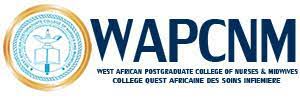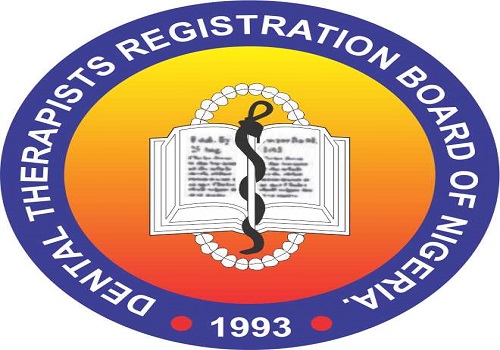Despite the manpower gap in the health system, hundreds of Medical Laboratory Science (MLS) graduates of Ambrose Alli University are still stuck and without practice licences over a breach of the quota system by their university. But for how long would the scientists be punished for the sins of their institution? IYABO LAWAL reports.
In January 2023, the Association of Medical Laboratory Scientists of Nigeria decried the alarming rate of brain drain, saying it lost 906 of its members to human capital flight in 2022 alone amid an estimated N664 billion spent yearly on medical tourism. That figure was projected to be $2 billion as of May 2024.
The association attributed the brain drain to the poor leadership of the health sector, corruption, poor remuneration and toxic work experience and called on the government to address the concerns, asserting that “the human capital flight has escalated to an alarming proportion”.
It, therefore, called on the Federal Government, through the Central Bank of Nigeria (CBN) and Bank of Industry (BoI) to provide “financial support through special intervention funds for private sector investment in healthcare delivery, and especially the building of mega and high-tech medical laboratories that can be globally competitive both in technology and test spectrum.”
Last May, erstwhile Minister of State for Health and Social Welfare, Dr Tunji Alausa, at the induction of 396 foreign-trained MLS graduates, noted that the government “is in a hurry to reposition the health sector to bring it at par with its peers in other countries, especially those we often seek to benchmark, and the narrative that we spent over $2 billion out of our meagre foreign reserves on health tourism is neither acceptable nor sustainable”.
The reason for the rush is in plain sight. Alausa said that based on recent data, the country had at least 300,000 health professionals attending to the healthcare needs of more than 200 million people.
“This is grossly inadequate and puts enormous pressure on the available workforce. Thus, in conjunction with the relevant stakeholders, including MLSCN, the federal government is taking the necessary steps to improve and stabilise the health sector,” Alausa stated.
Therefore, Prof. Tosan Erhabor, the MLSCN Registrar, appealed to the government to open up employment opportunities to attract young health professionals. He noted that doing so will create an incentive for them to stay back and help in repositioning the health sector, while slowing down the brain drain currently afflicting the sector.
“I wish to reiterate our previous plea to the ministry to establish a centralised pool for the internship posting of fresh medical laboratory scientists. That will undoubtedly reduce the current challenges faced by fresh graduates, who are forced to comb the streets in search of internship slots.”
No quota, no qualms?
For good measure, the MLSCN has placed a cap on the number of students to be admitted by academic institutions nationwide to ensure systematic and dynamic learning. The MLSCN has 56 institutions listed on its website, indicating the number (quota) of students allocated to each school. For example, the University of Lagos (UNILAG) has 75; Babcock University, 71; LadokeAkintola University (LAUTECH) 75; Madonna University, 126; Ebonyi State University, 120; NnamdiAzikiwe University (NAU), 100; University of Nigeria (UNN) 80; Imo State University (IMSU),Owerri, 70; University of Calabar, 100; University of Medical Sciences, Ondo, 40; Evangel University, Akaeze, 40; Elizade University, Ilara-Mokin, 35; and Ambrose Alli University, Ekpoma (AAU) 100.
AAU, however, sticks out like a sore thumb. The school decided that the 100-student quota was beneath its capacity. Rather than the earmarked quota, the university admitted at least 800 students into its Department of Medical Laboratory Science, forcing the hand of the MLSCN to wield the big stick by suspending the accreditation of the course with a four-year ban. Following protests by the affected students and their parents, the MLSCN reportedly agreed to induct the graduates in batches over the next four years. However, several students said they feel left in limbo because, without the MLCSN induction, they could not be licensed to practise.
“The school management has promised us a date for induction several times, but they keep breaking their promises, leaving graduates who spent eight years in university, instead of five in a state of uncertainty. We are eager to start our careers, but this is preventing us from moving forward,” a student lamented.
Previously, the MLSCN had emphasised the need for institutions to ensure that their candidates are indexed, reiterating that only candidates with valid index numbers would be allowed to sit its examination, with the council’s registrar pointing out that indexing of students should be done before March 31, which is the closing date.
“Any institution that indexes its student on April 1 would cause the student to lose six months. The examination rules are clear enough,” said the registrar.
With the AAU crisis, there are claims that students have been put on the waiting list for as many as half a dozen years. Amid this imbroglio, the National Association of Nigerian Students (NANS) called on the National Universities Commission (NUC) to regulate and monitor the admission quota for professional courses in universities across the country. This followed a meeting with the leadership of the MLSCN. The meeting highlighted the issue of indexing using the situation at AAU as a case study. MLSCN clarified that the backlog in indexing is primarily due to institutions admitting more students than the quota allocated by the council.
NANS appealed to NUC to take immediate and decisive action to ensure that universities adhere strictly to the admission quota set by professional bodies, adding that the quota must be respected to prevent the oversaturation of students in programmes that cannot support their professional development and licensing.
“It is alarming that certain university administrations admit more students than they can adequately train, fully aware that these students will not be able to obtain the necessary licences to practise upon graduation,” a statement by the student body said.
“This malpractice has created a dire situation where many students, particularly those in MLS programmes, have been left in limbo. Some of the graduates have been unable to write their professional exams or gain indexing, despite having completed their studies as far back as seven years ago.”
It demanded that university managements comply with these quotas and prioritise the welfare and future of their students by ensuring they are only admitted into programmes that can adequately support their training and professional licensing. The student body noted that the plight of MLS students across the country is a stark example of the consequences of ignoring professional admission quotas, adding that AAU students have been unfairly treated and their future jeopardised by the very institutions that were supposed to guide them towards successful careers.
Yet, AAU claimed it had everything under control. Last July, the university issued a statement saying, “Concerning students who claimed to have graduated for several years without being inducted by the Council, the reality is that we have a problem with over-admission that this administration inherited but must address. The Council of Medical Laboratory Science can only admit 120 students who have been indexed.
“By the grace of God, these indexed students will be inducted as soon as possible, as plans are underway to get the council to conduct the two prerequisite examinations that will lead to their indexing. Overall, the management is paving the way for a better set of graduates and students it is only a matter of time.”
Putting out a fire on the mountain
As of December 31, 2023, Erhabor said 10,697 medical laboratory scientists had left the country. According to him, more than 4,504 medical laboratory scientists left the country in 2023 alone for various reasons.
He noted that some are leaving as a result of poor remuneration and uncertainties in their career progression in teaching hospitals, while others are leaving in order to study abroad, acquire new skills, and enhance their professional status.
“Good numbers are also leaving because of the security situation in the country, poor infrastructure, and lack of modern equipment to work with. Above all, the rising cost of living is making it practically impossible for an average medical laboratory scientist to provide basic care and quality education for their children.” the MLSCN boss stated.
Perhaps to counteract this massive exodus, the MLSCN announced an upward review of the admission quota of 48 universities offering Bachelor of Medical Laboratory Science, admitting that the measure was necessary because there are not enough scientists in the country, considering its huge population.
The council said it would also double admission in 131 colleges of health technology offering Medical Laboratory Technician programmes with commensurate improvement in their capacity to provide quality training.
“With these, we will have more medical laboratory scientists and medical laboratory technicians to cater for the needs of our ever-increasing population,” the registrar noted, revealing that the council “has also assessed, evaluated and registered 1,384 foreign graduates of MLS, in pursuit of Section 4 (f) of the council’s Act.”
A course with a rich history
On the successful completion of the five-year Bachelor of Medical Laboratory Sciences programme and one-year internship, preceding participation in the National Youth Service Corps (NYSC) programme, graduates are registered as associate members of MLSCN.
During General Yakubu Gowon’s regime as the head of state, Decree 56 of 1968 was enacted, thus establishing the then Institute of Medical Laboratory Science Technology (IMLT) as the council was then known. According to Gowon, the Institute of Medical Laboratory Technology Decree No. 56 of 1968, which came into effect on November 19 of the same year, set the tone for the commencement of full training of medical laboratory technologists in Nigeria.
He further noted that having been established by Decree 56 of 1968, the organisation was transformed into the Institute of Medical Laboratory Science and Technology of Nigeria Decree 54 of 1999, while the MLSCN came into being through the Act 11 of 2003 and brought with it fundamental responsibilities.
The policy thrust of MLSCN is to stem the efflux of Nigerians for quality healthcare abroad with attendant huge capital flight by driving the culture of quality and efficient health laboratory care to the public as empirical data has shown that over 75 per cent of indices required for effective medical diagnosis and treatment monitoring are based on medical laboratory tests results.
Among other things, MLSCN is to regulate the practice of medical laboratory science in Nigeria, determine from time to time the standard of knowledge and skill to be attained by persons seeking to become medical laboratory scientists, medical laboratory technicians and medical laboratory assistants, regulate the training of scientists, technicians and assistants in any institutions in Nigeria and give periodic accreditation to institutions and provide and maintain separate register for scientists, technicians and assistants.
The body is also to regulate the production, importation, sales and stocking of diagnostic laboratory reagents and chemicals, assess, evaluate and register foreign graduates of medical laboratory science, conduct examinations for technicians and assistants; inspect, regulate and accredit medical laboratories (public and private) and perform such other functions as may be conferred on it by the Act.
SOURCE: GUARDIAN NEWSPAPER




